
Am I the only one that grows herbs and then thinks, “Okay…now what the heck do I do with these?”
I mean, for some herbs, it’s obvious. Mint you make a ton of mojitos and dry it for tea and make mint jam. Rosemary is a pretty easy one to figure out in the kitchen, and its health benefits are well documented. Basil gets made into pesto and many, many caprese salads.
But oregano? That one gets me every time.
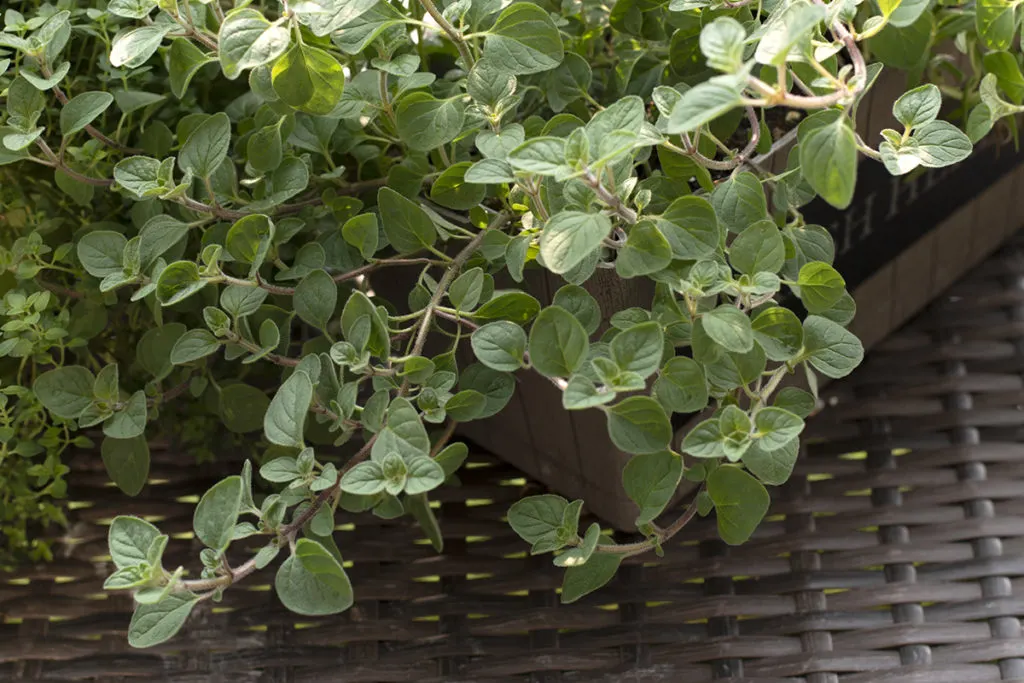
What exactly do you do with oregano, other than dry it and sprinkle it over your pizza?
Well, as usual, I’ve got you covered. We’re going to take a good long look at this popular Mediterranean herb. We’ll talk about how to grow it, how to dry it, and of course, what the heck to do with it.
So, grab your herb snips and gather a bunch of oregano because when you get done reading, you’re going to need it.
For this article, we’ll be focusing on the Mediterranean variety. Mexican oregano is growing in popularity, and you may find it at the grocery store or your local plant nursery. However, they’re two different plants from different families. But we’ll come back to that later when we start cooking with it.
For now, let’s take a look at how to grow oregano.
If you love herbs that do best left to their own devices, you should be growing oregano in your landscape. In the wild, Mediterranean oregano grows in dry, mountainous areas. It prefers a warmer climate and does well in soil where other, more demanding, plants wouldn’t survive.
If you’ve got a rocky area of your property, where the soil dries out, consider planting it as a ground cover. Zones 8 and higher in the US, oregano can be grown as the perennial it is.
If you live where winters are cold and harsh, you can still grow oregano perennially. But you’ll need to cut it back and mulch it well before cold weather sets in. You’ll be rewarded with a plant that pulls double-duty as a groundcover and culinary herb.
Oregano does well in containers too.
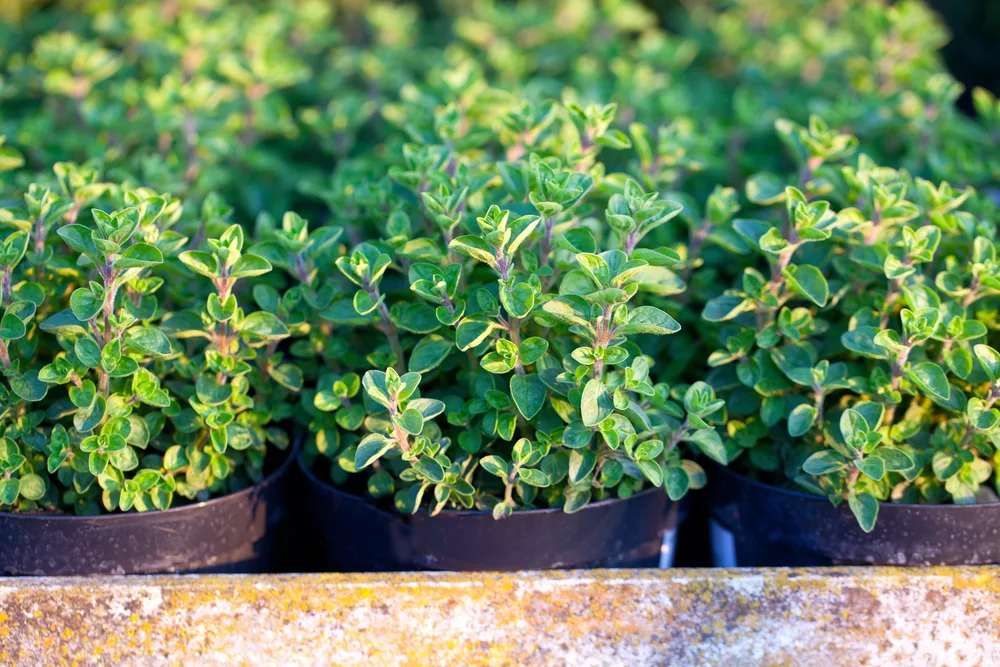
Just remember that it prefers well-drained soil and lots of bright sun. Container growing is excellent for areas with hard winters because you can bring your oregano inside and enjoy it fresh all winter long.
For larger container-grown oregano, once a year, you’ll want to trim it back hard and break up the soil as it gets compacted. Use a long chopstick or a small hand tool to poke holes in the dirt and break it up gently. Add a few handfuls of compost and then water it well. This routine maintenance will keep big containers of oregano happy and healthy for years.
While oregano grows naturally in a Mediterranean climate, you may find on hot summer days that it benefits from a good drink.
To keep your oregano doing well, trim it hard regularly. Giving it a good ‘haircut’ will encourage plenty of new growth and keep you in delicious oregano year-round. You can easily cut 2/3 of the plant back, and it will reward you by pushing out tons of new growth.
Occasionally, oregano will go through a rebellious teen phase where it’ll look unkempt and rather raggedy. Don’t pitch it, just trim it back hard and let it be. It will bounce back eventually. It’s all part of oregano’s usual growing cycle.
Companion Planting with Oregano
Oregano is the perfect companion plant for brassicas – cabbage, Brussels sprouts, cauliflower, and broccoli, as it’s a natural repellent to cabbage butterflies. When planning your garden, don’t forget a few oregano plants.
And in the herb garden, it does well among its fellow culinary herbs – marjoram, rosemary, thyme, and basil, to name a few.
Now that you’ve successfully got oregano growing let’s talk about preserving it.
Storing Fresh or Drying Oregano
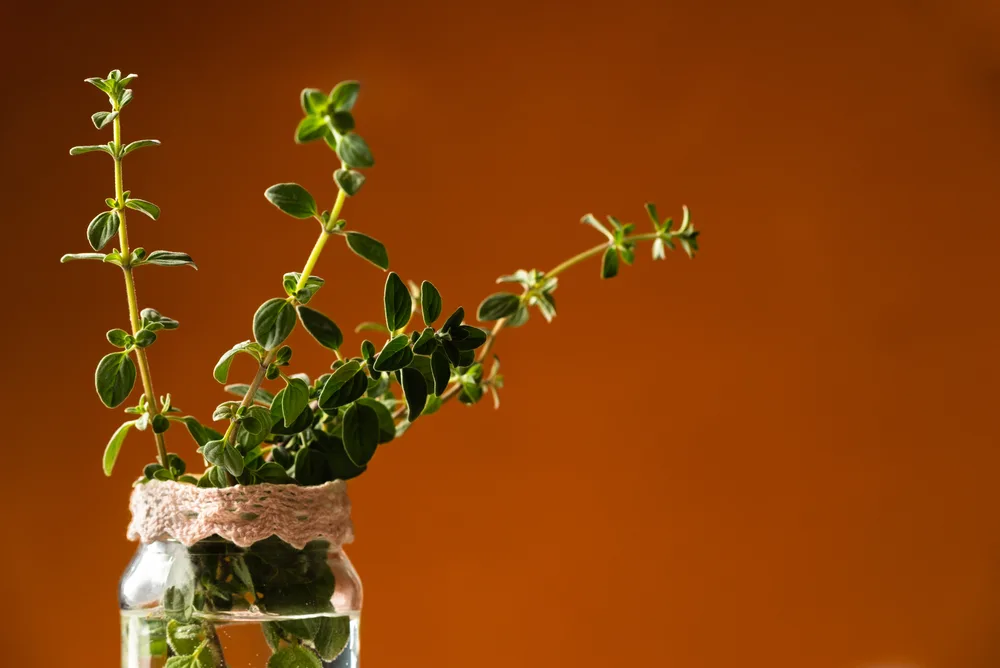
If you gave your oregano a heavy trim, but you don’t want to dry it all, you can keep it fresh by immersing the stems in a jar of water. Who doesn’t love a bouquet of fresh herbs on the counter?
There are plenty of herbs that you can just stick out in the sun for the day, or put them on a baking sheet in a low temperature oven to dry. Oregano isn’t one of them. Drying it in either of these ways will result in flavorless, colorless flakes. (Kind of like those bottles of herbs you find in dollar stores.)
The two best methods for drying oregano are to hang it out of the sun in a well-ventilated place or dry it in a dehydrator. Both ways will preserve oregano’s flavor and color best.
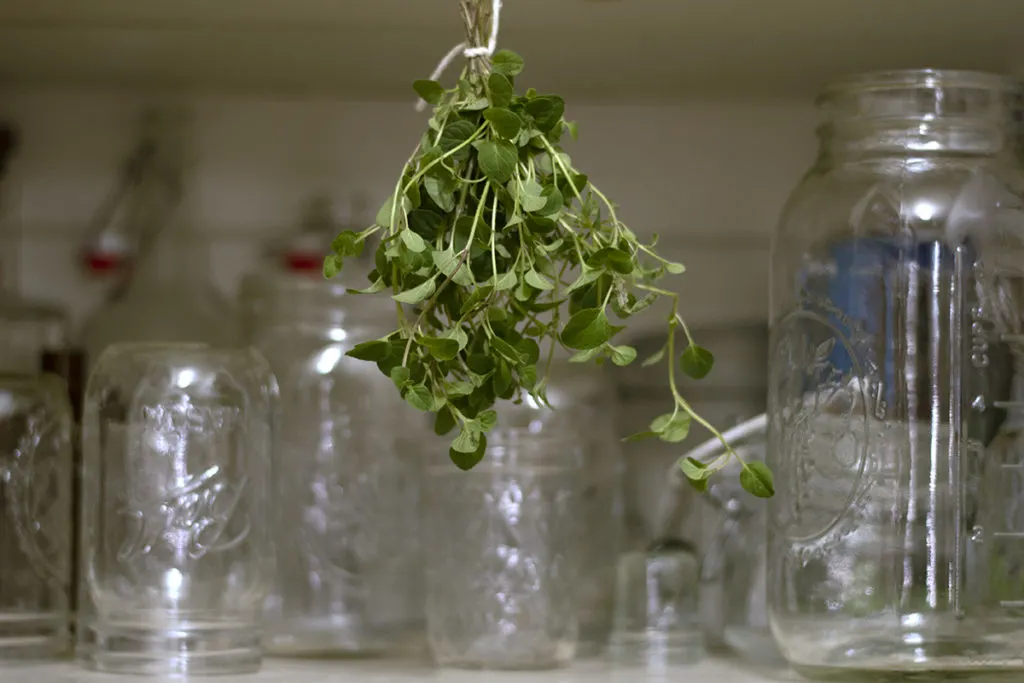
If you choose to hang your oregano to dry, you can keep it dust-free by wrapping a piece of cheesecloth around it. Or you can cut a hole in the bottom of a small paper bag with holes punched into it. Thread the stems up through the hole, or similarly wrap the oregano bundle with a piece of brown paper with holes punched in it.
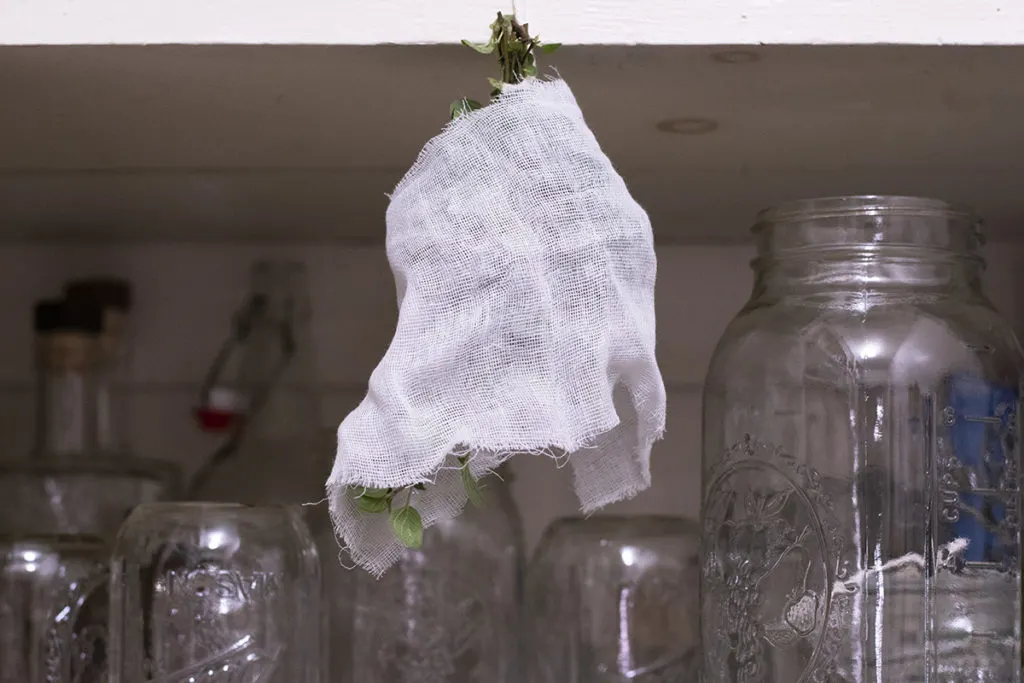
Any of these methods will ensure adequate airflow while keeping dust off your delicious oregano while it dries.
Cooking with Oregano
As I mentioned way back at the beginning, we’re focusing on Mediterranean oregano, which is from the mint family. In contrast, the Mexican variety is from the verbena family, like lemon verbena. Mexican oregano has a more citrusy flavor profile and doesn’t usually work for the same types of dishes that Mediterranean oregano does.
Mediterranean oregano, also known as Italian, Spanish, or Greek oregano, is more common.
You may be surprised to learn; the flavor of fresh oregano compared to dried oregano is quite different. Fresh oregano is spicy and peppery; you bite it, and it bites back. Then there’s dried oregano, which is more mellow and earthy in flavor. Cooking with fresh oregano takes much of the bite out of it.
And oddly enough, unlike most herbs whose flavor intensifies when dried, it becomes less intense. Most recipes that call for dried herbs use much less than if you were using the same herb fresh. Keep that in mind when you decide to sub fresh or dried oregano in a recipe.
The flavor of oregano stands up to heat well too. This means you can add it at the start of your cooking, and the flavor won’t get lost throughout the cooking process.
So, what can I put it in?
Oregano is synonymous with Italian cooking; use it in anything with an Italian vibe. Let’s just get this one out of the way right now – pizza. It’s a classic standby, and any good pizzeria worth their salt will have shakers of it on the table.
If you want to take your pizza game to a whole new level, try putting dried and fresh oregano on it before you take a bite.
Basically, anything with tomatoes deserves to have oregano added, even chili, which is anything but Mediterranean food.
Oregano pairs well with your three primary proteins – beef, chicken, and pork. And olive oil is a good way to decide if oregano will go well with certain vegetables – if your recipe calls for olive oil with your veggie, chances are oregano will complement that dish.
1. Compound Butter
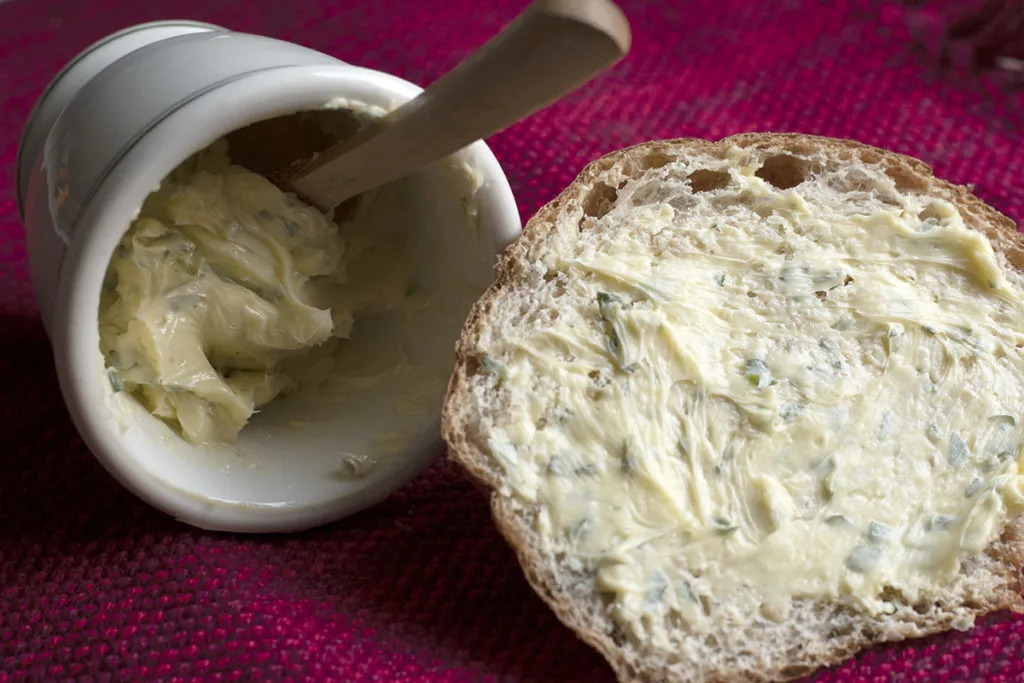
Yeah, I know, I say that about all the culinary herbs. But it’s so good. I love butter. I think it’s why I love toast so much – it’s a butter delivery mechanism. Adding a flavorful herb to butter – yes, please.
And it’s so easy to do. Here are the directions, ready? Chop up a bunch of oregano leaves and whip them into the butter using a mixer.
Done.
2. Oregano Pesto
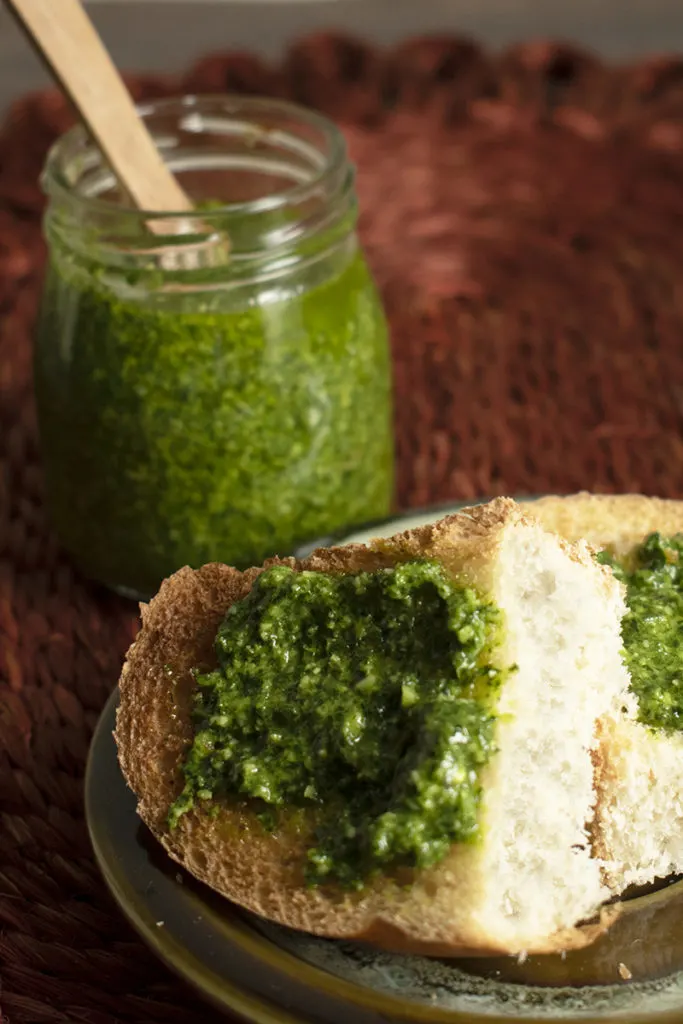
If you’ve got a ton of oregano on your hands and you’re ready to take your pesto game to a whole other level, give oregano pesto a try. The peppery bite of fresh oregano makes for a zesty pesto that will have you going back for seconds.
Donna, over at Whole Food Bellies, has the lowdown on making oregano pesto, and she’s even got substitutions to make it vegan and allergen friendly.
3. Oregano Infused Vinegar
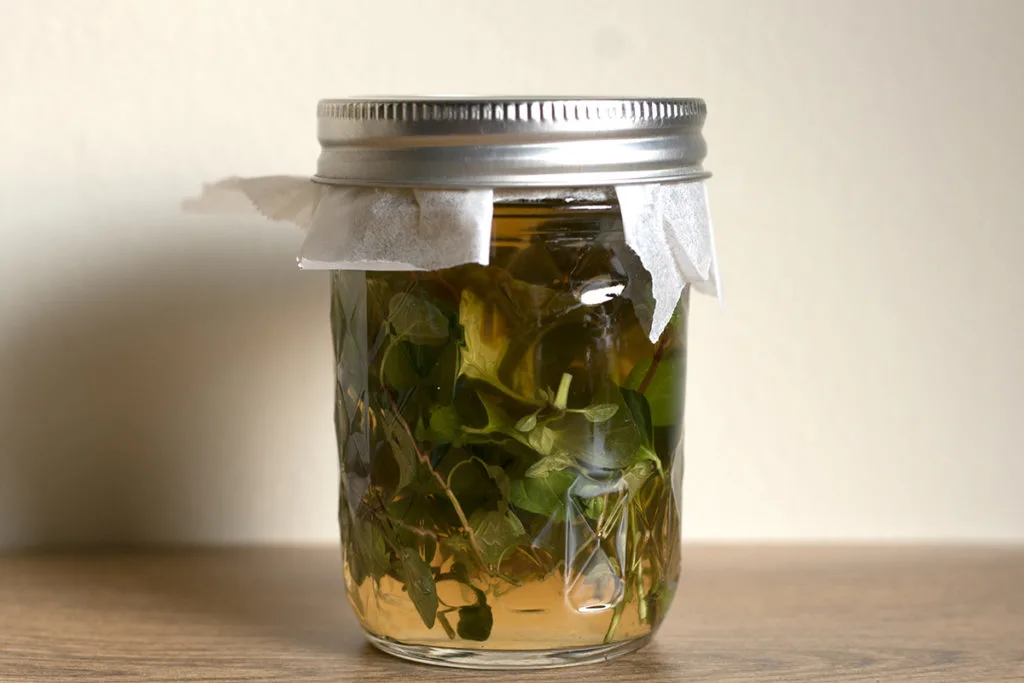
Infused vinegar is another one of my go-to ways of using up herbs in the kitchen. I love whipping up quick salad dressings with them or mixing them in with a marinade.
Are your veggies a little boring? I’ve got just the thing for that – a dash of oregano infused vinegar.
Be sure to use a sterilized jar or bottle and add the fresh oregano to it, stem and all. Pour in enough vinegar to cover the leaves completely. White wine vinegar works incredibly well, but you could also try balsamic vinegar or red wine vinegar too. Give it a good shake, and then let the vinegar infuse in a cool dark place for 4-6 weeks.
Strain the finished vinegar using a coffee filter into another clean, sterilized jar and label it. Then start getting creative in the kitchen. I love these little swing-top bottles for all of my infused vinegar.
If you love the taste of a good infused vinegar, check out Cheryl’s Spring Herbal Infused Vinegar
4. Bouquet Garni
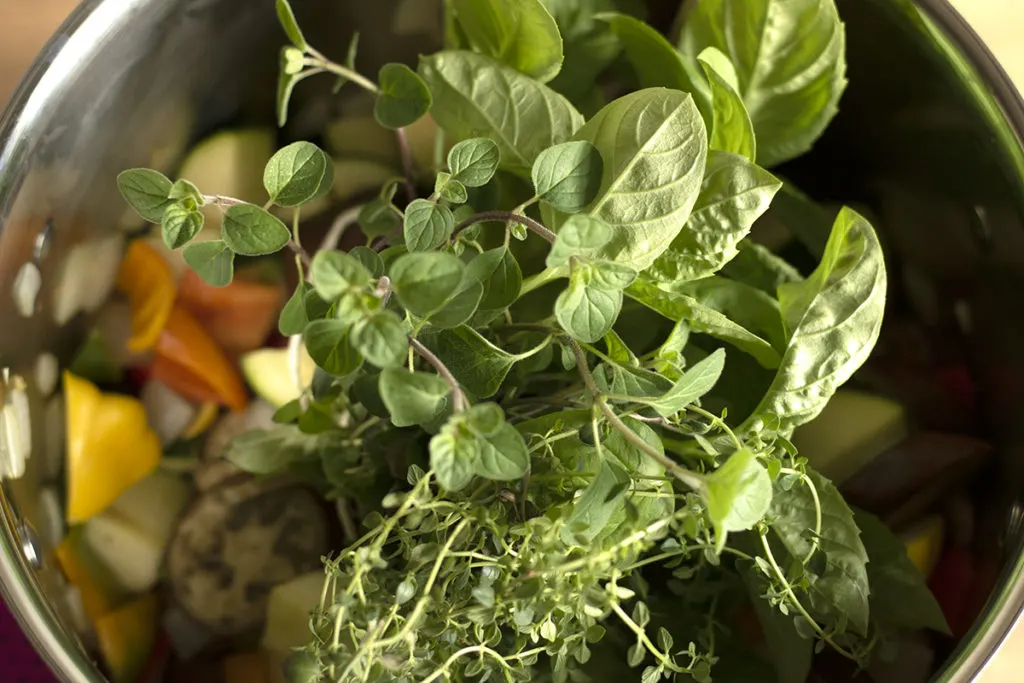
And of course, no bouquet garni is complete without a few sprigs of oregano added to it. The nice thing about fresh oregano is that the stem isn’t too woody, so you won’t get any weird woody flavors, but it won’t entirely fall apart while it’s cooking either. (I’m looking at you, basil.)
But what about out of the kitchen?
Oregano goes beyond the dinner table with its usefulness.
The Greeks loved this stuff and touted its medicinal benefits regularly. They also had some pretty interesting superstitions surrounding this favored herb. Check out this great piece by Kerry Kolasa-Sikiaridi in the Greek Reporter to learn more about the many ways it was used in ancient Greece (and still today).
Oregano wards off evil spirits? Does that include ex-boyfriends?
According to Natalie Olson of Healthline, oregano is popping up as a medicinal herb more and more these days due to a few of the compounds found in it – flavonoids and phenolic acids, which can play a role in the way the body fights inflammation. Oregano is also purported to have antifungal, antibacterial, and even antioxidant properties.
While there have been few studies on the health benefits of oregano done explicitly on humans, there have been many studies on mice. The scientific community is starting to take notice. Mainly in part to the many, many years of anecdotal evidence provided by the herbal community.
So, let’s take a look at a number of ways to use oregano besides sprinkling it on your pizza.
As always, consult your physician before using any herb in a medical capacity.
Let’s start with the difference between oregano oil extract and oregano essential oil.
You make essential oils by steam-distilling the herbs, so the resultant oil is highly concentrated. There is a lot of debate about whether or not you can ingest essential oils, and to err on the side of safety, I would recommend that you don’t. You should never apply essential oils full-strength to your skin, either.
This is why making an oregano oil extract is preferred; the resulting oil isn’t as potent as an essential oil. Off the Grid News has an easy 5-Step recipe for homemade oregano oil.
If you use olive oil for your carrier oil, you can use it both to cook with as well for the body. You’ve got to love olive oil.
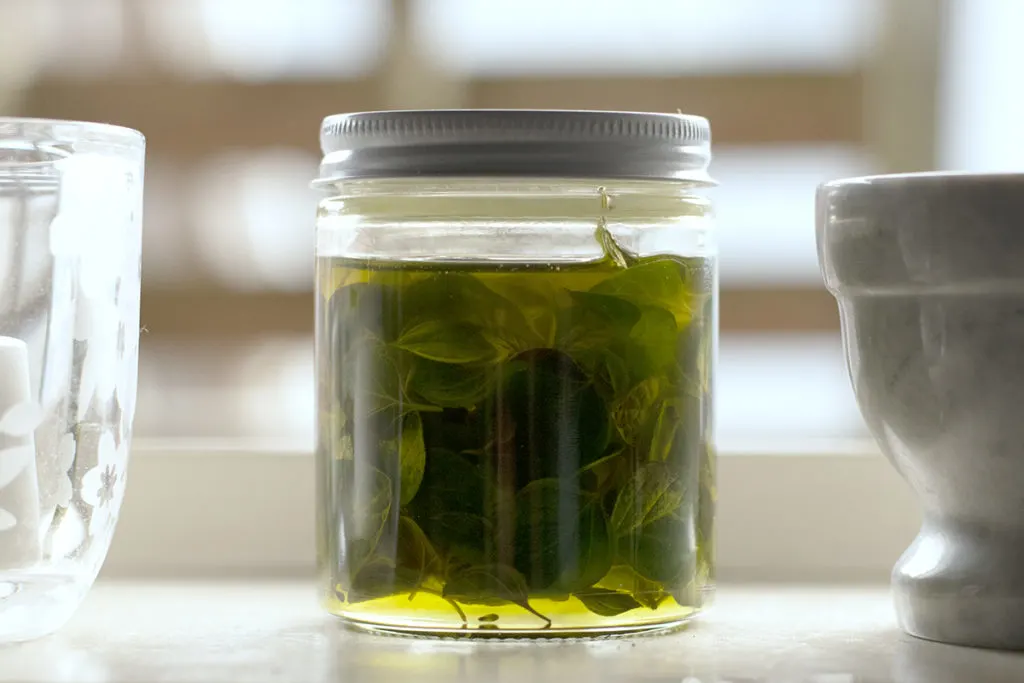
5. Massage Oil for Sore Muscles and Arthritis
Oregano is a warming herb, meaning it can bring heat to the skin. With this in mind, as well as it’s anti-inflammatory properties, homemade oregano oil can be used on tired, sore muscles at the end of the day, or rubbed into arthritic hands to possibly offer some relief. You’ll want to test it on a small patch of skin first.
6. Oregano Tea
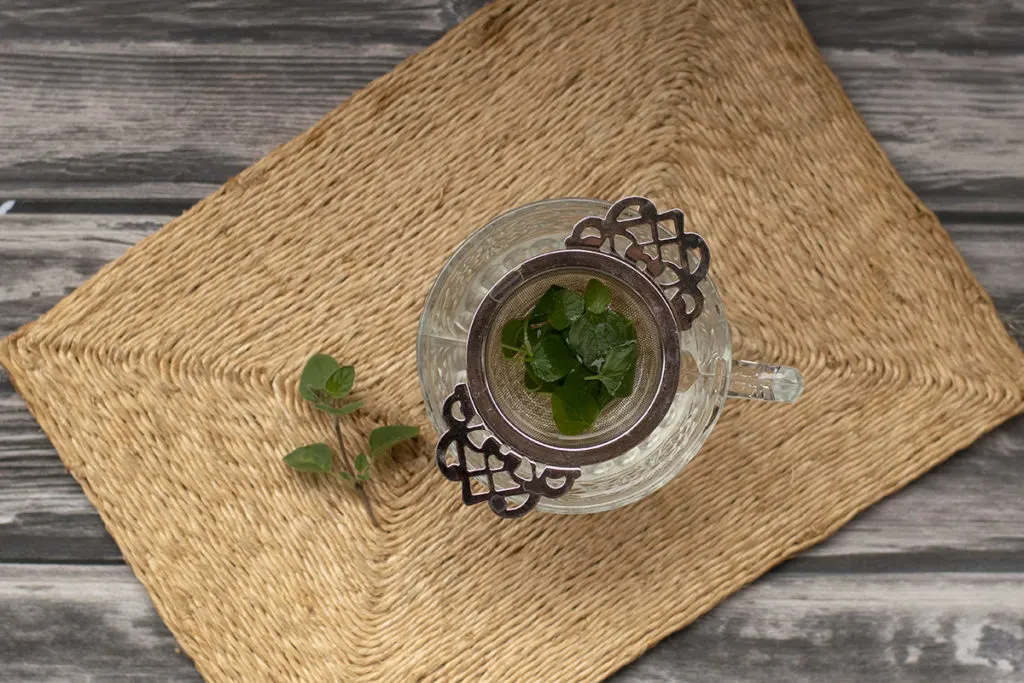
Sip a hot cup of oregano tea to help settle an upset stomach or soothe sore throats and help fight a cold. You can use either fresh or dried oregano to make tea. The flavor is peppery and a little astringent, but not too bad. Healthline recommends drinking no more than 4 cups a day.
7. Make an Oregano Tincture
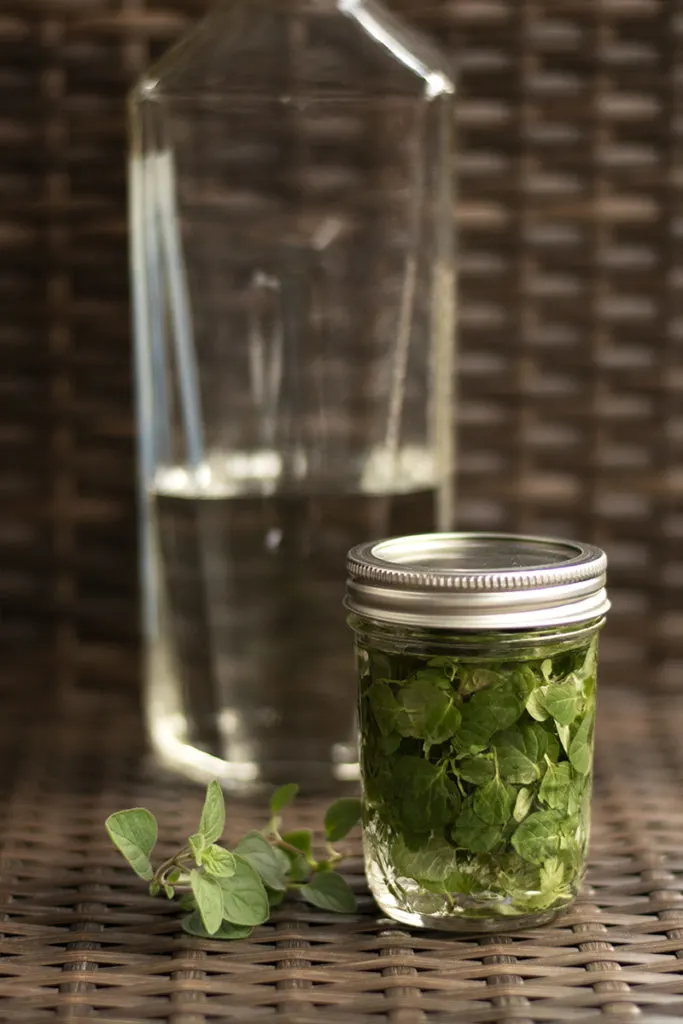
Tinctures are easy to make and are a great way to reap the health benefits of many herbs. All you need is a clear base alcohol, I find vodka works best, and plenty of your herb. In this case, you need plenty of fresh oregano.
Remove the leaves from the stem and put the leaves in a half-pint mason jar. You want the jar to be full, but not packed tightly. Pour in enough vodka to cover the leaves completely. Place a small piece of parchment paper in the lid to keep the alcohol from corroding the band.
Give it a little shake; the leaves should swirl around and move freely.
Keep the jar in a cool, dark place and shake it up every week or so, checking to ensure the oregano is still completely submerged. Anything not submerged could grow mold or bacteria. In about 6-8 weeks, it should be ready.
Decant the tincture into another clean mason jar or an amber bottle with a dropper. Use a coffee filter to filter the tincture. Always label your tinctures with the date, herb, and alcohol.
You can take a dropperful directly or with your tea. Use it in much the same way you would oregano tea.
8. Add Oregano to Cut Flower Arrangements
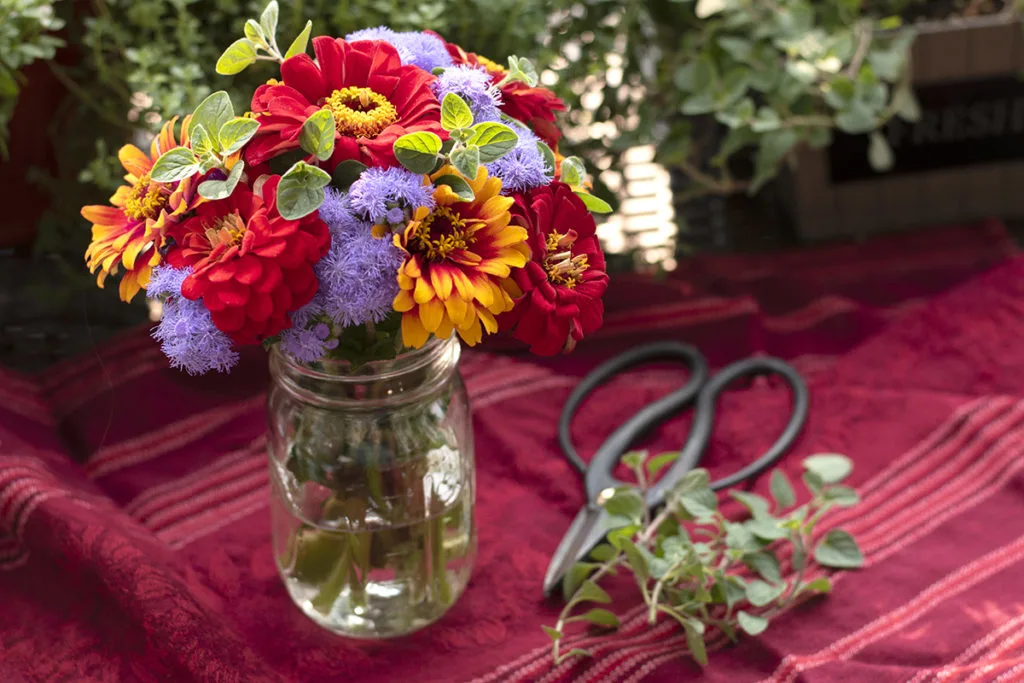
The beauty of oregano and the sturdiness of its stems make it the perfect addition to a cut flower arrangement. When you need an extra pop of green, tuck sprigs of oregano into your bouquet. The scent of it adds to your arrangement as well.
9. Do Nothing with It
This is an excellent option if you’re growing oregano as a groundcover. Simply let it be. It will continue to grow and spread.
In the fall, it will flower, giving pollinators something to nibble on. Not everything has to be grown with a myriad of uses in mind. You could grow this beautiful plant, just to enjoy its beauty in your landscape.
But now, what are you going to do with all of that lavender you grew?

Get the famous Rural Sprout newsletter delivered to your inbox.
Including Sunday musings from our editor, Tracey, as well as “What’s Up Wednesday” our roundup of what’s in season and new article updates and alerts.

